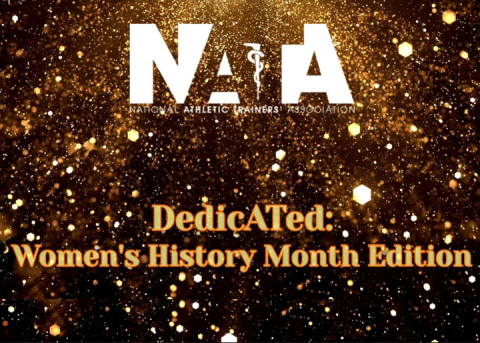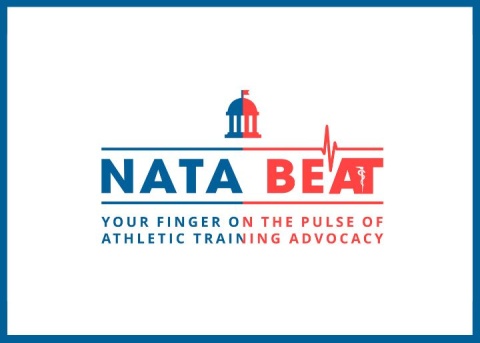
By Dan Newman, MS, LAT, ATC
Do you Tweet? Do you Facebook? Do you Instagram? How about Snapchat? If those four simple questions leave you scratching your head, then you are in the minority. Today, there is more than 2.3 billion, yes billion with a “B,” people using some sort of social media. Social media has taken over every aspect of our lives. From creating and ordering groceries to posting pictures of the family reunion and even help planning a family, there is not one aspect of your daily lives that has not or cannot be affected by social media.
My second question to you would be this, how do you use social media? Do you keep it personal? Do you use it to enhance or promote your athletic training program? Does your employer have a social media policy? In world of the 140-character tweet and the six-second Snap, social media can be tremendous tool for the secondary school athletic trainer but at the same time there are many pitfalls the AT can fall into if not careful.
#ITCANHELP
The secondary school AT faces many challenges daily; however, the power of social media can help curtail some of those daily challenges. Let’s play the “what if game.” What if you are getting ready to start pre-season football, and you want to get information out about hydration and nutrition to parents and athletes? What do you do? Do you A) print off a flyer and hand it out to every player and hope it will make it home to the refrigerator; or B) use your athletic training program Facebook page or Twitter feed? Me, I choose B. The days of sending home notes and hoping the information gets there is over. Just one tweet could garner 100s of impressions, which is much better than ending up in file 13.
Get in the habit of following Twitter feeds or Facebook pages that post pertinent information to your setting or situation. From there whenever you see something, like “top 10 tips to increase hydration” you can post it and or tweet it to all your followers. By sending out information personally, you have put your stamp on it, so you know your student athletes and parents are getting the right information, not fake news.
#WHEREDOIBEGIN
Step 1: Choose your social media medium. For me, I love using Twitter in conjunction with Pocket (Pocket? Hang on, we will get to that). Twitter is an excellent format to get information out about an upcoming event, closings, treatment/rehab times and news or information about anything sports medicine. You really can say a lot with 140 characters.
Step 2: Create an account. Before embarking into the world of the Twittersphere, I would first check with your administration to see if there is a social media policy in place. In my setting, I was able to create a Twitter feed for my athletic training department, and I was required to have one of my ADs know the password of the account. Along with policy, you will want to outline some personal rules for yourself. For example, keep it professional. Follow only feeds you feel would carry important information. Follow the schools in your district, maybe your athletic department feed and/or individual athletic teams feed.
Step 3: Pocket is an excellent tool that works well with Twitter. Pocket acts as a repository for Twitter articles you don’t have a chance to read right away. After going back and reading the article, you can determine if its tweet worthy or not.
Step 4: Start Tweeting. This doesn’t have to be an everyday occurrence. Maybe you only tweet when there is information. Some may choose to have something posted on a certain day. The more information you can put out there or brag on your staff or students, the better it can be for your program.
#TOFOLLOWORNOTTOFOLLOW
Social media can one of the great tools in your arsenal, but in the wrong hands, it can ruin your career. I am constantly aske if I follow or let students follow me. My answer, yes and no. One should ask this question personally and professionally. Professionally, it can be dictated by your employer. They could have a strict policy of no communication with students via social media. Personally that is up to you, when making that decision, remember that those parents and students will see everything you do, so beware.
#POSTINGFROMTHEHIP
For the secondary school AT, there are a few social media forums for us to comment, pose questions and ask for advice. These forums can be cathartic and helpful, but we have to remember a few key rules:
1. Don’t get personal in your comments. It’s easy to read someone’s post and fly off the handle. Remember to stay positive and professional. Getting personal will never lead to good things and you don’t want to be known as that guy.
2. Don’t post negative comments about your work colleagues, employer or athletes. I’m seeing, and I’m sure you are too, many of our colleague posting about how their job isn’t doing this or coaches aren’t doing that and it makes you mad. Folks, I’m sorry to burst your bubble, but Facebook is not the place to air your grievances. If you think it won’t get to your boss, you are sadly mistaken. It’s the interweb, folks, you may think you deleted it, but it’s still there, so think before you post. You can save yourself a lot of heart ache.
3. Be prepared to maybe hear something you don’t like. When posting questions or comments, you are fair game. Don’t take it personally.
4. Try to keep personal and professional separate. I’m pretty sure you don’t want your students to see that party pic from your freshman year in college.
#THECONCLUSION
The internet, and more importantly social media, can be a very powerful medium for the secondary school athletic trainer. Just like anything, there must be great care when using it. I bet we can all think of a post, tweet or insta pic that we thought, “What was that person thinking?” Here is a great link I refer to often that are some simple do’s and don’ts for social media posts. Take a gander at it, it may one day save you some heartache.
NATA also has social media best practices and a social media policy for volunteers that all members should review.




